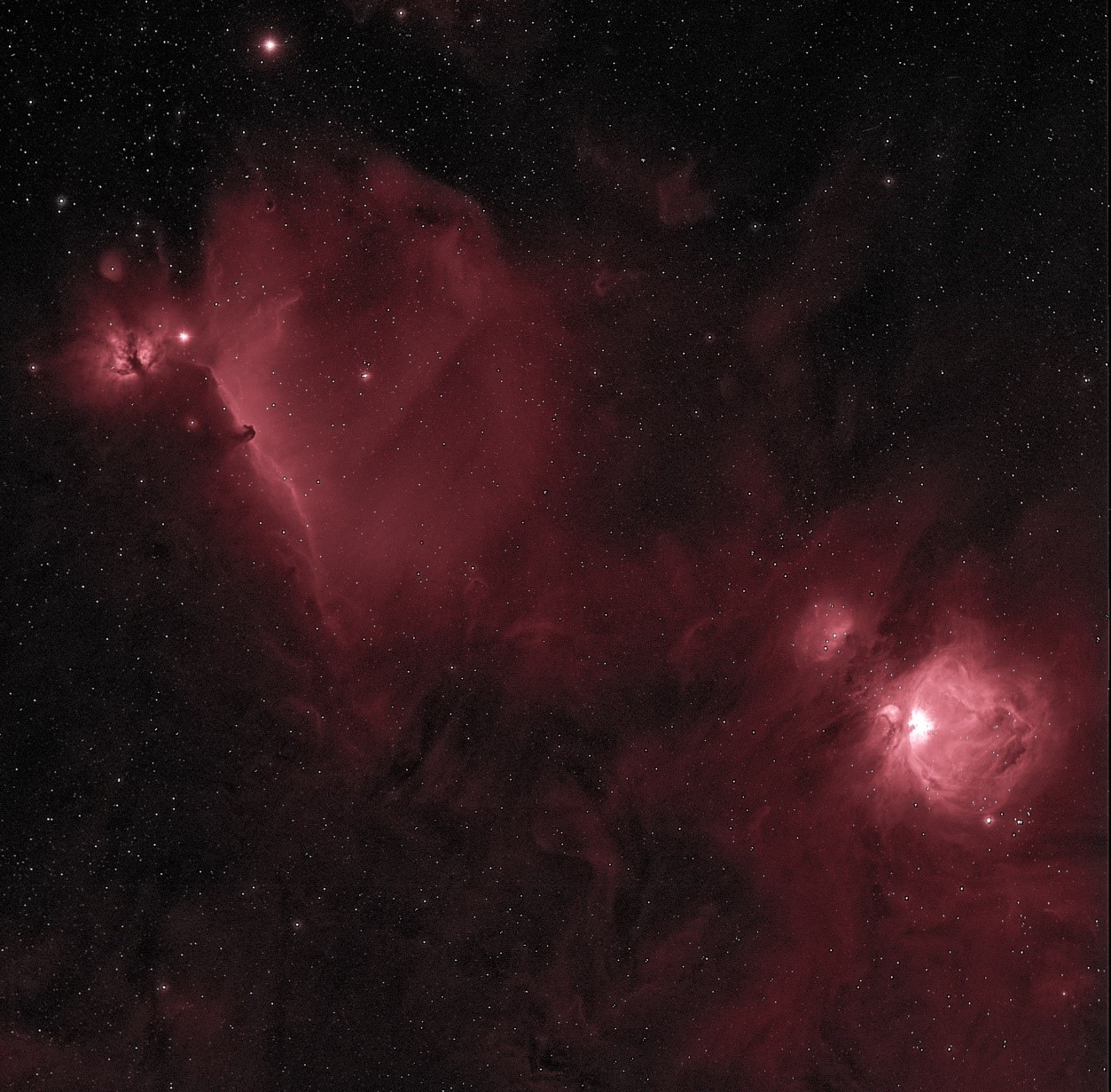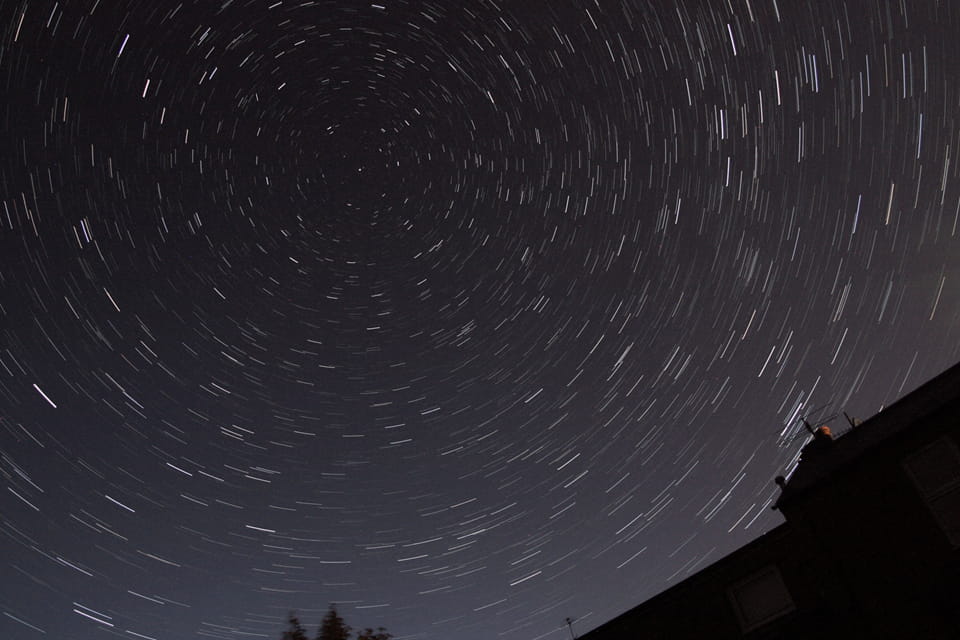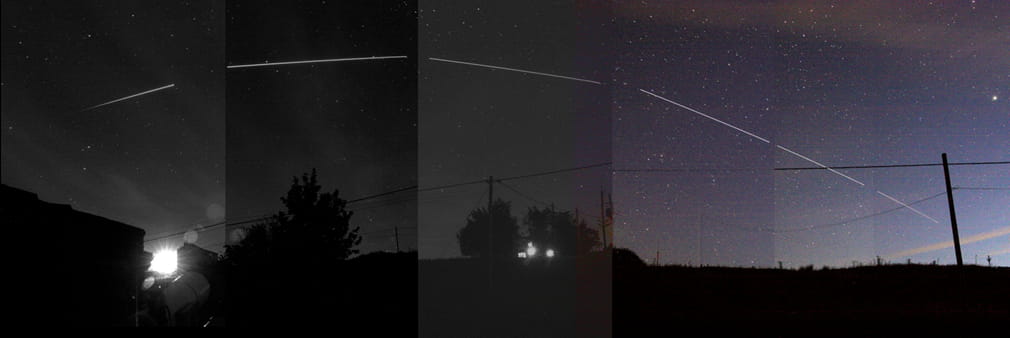North Pennines Stargazing Week
Journeys in astronomy
30 October 2020
Journeys in astronomy
An interview with astronomer and science educator, Andrew Gray
My name is Andrew Gray and I live most of the time in North Shields, but for the last 13 years we have also had a house at Allenheads in the fantastic dark skies of the North Pennines National Landscape. My first job was as a research chemist, but I trained as a teacher 22 years ago. Now I have a business, AKG Science Support, where I support school science departments, do some A level tutoring, mark exam papers and I am also the PGCE chemistry tutor at Newcastle University.
Being interested in space has been a great hook as a science teacher as it seems almost all students are keen to talk about the universe and its mysteries. I have probably talked to over 5000 students between five and 90 years old about space at one time or another. For the last couple of years, I have been one of the Astro guides at the Lord Crewe Arms in Blanchland and we have had some great nights under the stars. The historic hotel does great food and drink, and they look after everyone so well.

When I was young my parents, grandparents and their relatives owned caravans on the site at Catton, at the northern edge of the North Pennines National Landscape. I think our family owned more than six of the vans at one time. One of my earliest memories was coming out of the Crown pub at Catton heading back to the caravan site in the autumn, seeing a perfectly clear, moonless sky and being amazed at how many stars you could see. I had never seen anything like it. Years later when I was doing a talk for the North Pennines AONB Partnership at St Johns Chapel, the AONB Partnership funded a coach and we took some sixth form students. The weather was poor when we arrived but, on the way home, it was clear enough for us to stop at Parkhead Station. One of the students asked: “What’s so special about this place?” as they had never seen the Milky Way. I had to explain it was just because it was away from the light pollution of urban areas and that made it “properly” dark!
The reason I keep coming back to stargazing and space, is mostly because it is almost unbelievable. It gives us all a sense of perspective which is so important in the current climate and being able to share these experiences. Explaining in some way how humans have been able to understand science and our place in the universe gives me enormous satisfaction.
The first constellation I learned about was Orion, and I keep coming back to it. It’s an amazing area of the sky with so much going on. Coloured stars and easy to see nebulas and it always seems to be watching over us on the way home after a New Year’s party.


Once we bought our house at Allenheads, I could not believe how dark it was and I knew would be a shame not to have a telescope. I bought a cheap Tasco one to start off with, just to see if I would use it but then I fell headfirst into the hobby and I have had lots of telescopes and cameras. Its more cost effective if you buy second hand and there are lots of websites which make this possible. Astronomers tend to really care for their gear. I think the best thing I bought was a computerised mount which meant it was easy to find things in the night sky and with the climate and cloud amounts in the British Isles, it meant I could see lots of things in a short space of time. I have since got much netter at finding objects by eye and I currently have an 18” Dobsonian scope which gives incredible views. Technology has come a long way in the last 40 years. In fact, I used to work with a guy who did his PhD in the 1970s working with some of the first digital cameras. I showed him some of the photos from Allenheads and he said they were better than they could get in the 1970s with the best telescopes in the world. I think I realised I was getting seriously into the hobby when I bought a dedicated Astro CCD camera which cost more than my wife’s car.
There are so many amazing things through the scope, but I still think the most amazing thing is the view of the Milky way from the dark skies of the western USA. We have been travelling over there for the last 5 years and the skies there are so clear and its warm too which is so unusual when you are used to being in the cold over here. I also managed to see the total eclipse in the USA in 2017 which is an incredible experience. I still want to see the Northern Lights and the skies in the Southern Hemisphere.


I started in astrophotography quickly as initially I was quite disappointed with what can be seen through the eyepiece of a telescope. Our eyes are just not evolved and sensitive enough to see lots of what is out there. The rate of progress of phone cameras means that with the big telescope I have been able to get pictures of the moon and planets with a phone camera. Ideally you need some apps. Ones which show the best things to see that evening (something like Celestron’s Skyportal is good, as is Star Walk or Stellarium (app and pc free download). There are more options with a dSLR camera and it’s pretty easy to take star trail photos or photos of the moon. To take photos of deep sky objects costs a bit more as you need a mount which tracks the apparent movement of the sky but there are some interesting telescopes coming along which look like they will bring the cost of this down. I just hope that the companies sending up the constellation of internet satellites like Starlink, don’t spoil the night sky for everyone. There are some great online astro tutorials on YouTube and that’s where I started. There is also a great book called Making every Photon Count by Steve Richards. Gary Lintern also runs some introduction to stargazing workshops which are particularly good too. https://photographyexperiences.co.uk/

The North Pennines is such a great place to see stars because the people are friendly, and the skies are very dark. There are areas which are almost as dark as it’s possible to get and on a still winter’s evening it can sometimes feel like the stars are just above your head. Sometimes there are so many stars it is difficult to make out the constellations. My favourite place to stargaze is in the back garden at Allenheads because the skies are dark, and it’s easy to nip inside for a cup of tea to warm you up when it gets chilly.

A typical stargazing evening when I am showing people around, starts off with doing some research of what will be in the sky, checking if there will be an International Space Station flypast and which planets will be visible. The telescope needs to go outside as soon as you can because it needs to cool down. If you do not do this, the air in the telescope can cause the image to wobble and it spoils the view. A good tip my Dad passed on was getting a square of old carpet to insulate your feet from the cold ground, that makes things more comfortable. If you have a reclining chair and a blanket, then get those ready and then just sit out and watch the sky get dark. The stars start to jump out as the light falls and as soon as that happens you will be able to see planets or the moon well, as it gets darker nebulas and galaxies become more obvious. Ideally you want to be outside for 20 minutes before your eyes become adapted to the darkness, make sure you don’t look at any white light, because that spoils your night vision and it takes another 20 min again to get it back. Red light is fine. Then stay out and watch for shooting stars. These appear on many evenings if you are out there looking. When a meteor shower is due, you can see several an hour.

Stargazing is an amazing hobby and it really gives me a sense of place. If you are just starting out then read a lot, get some apps, and just get out there. You do not need a telescope to start. If you have binoculars, then look through them and see what is up there. There are many local astronomy groups too where there are lots of extremely helpful people who will show you their telescopes and answer any questions. Hopefully next year you might be able to get along to the North Pennines Stargazing Festival or the Lord Crewe and I might see you there.
Visit our Stargazing Week hub for more events, blogs and features.











